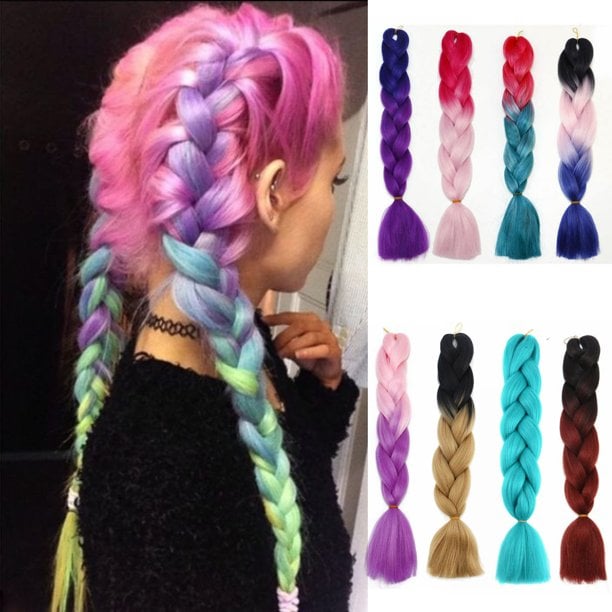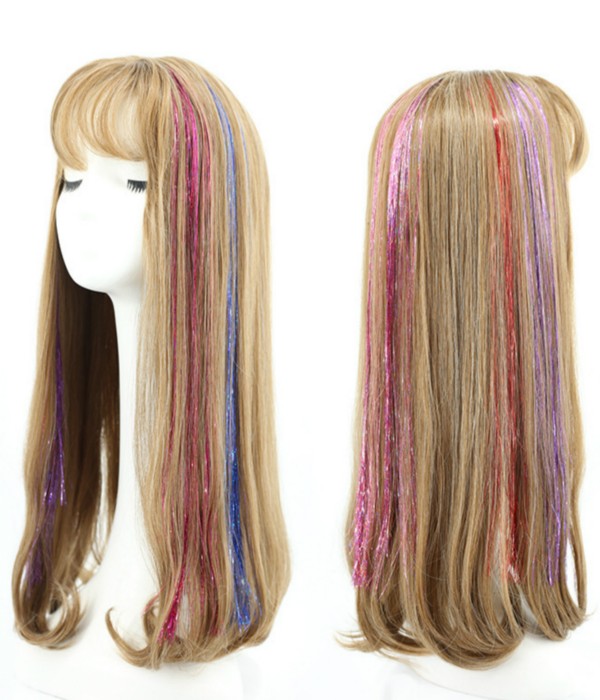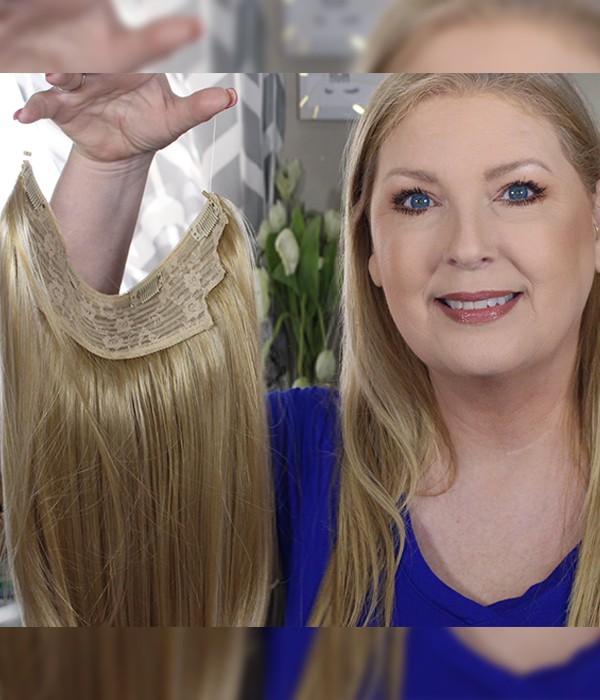What kind of hair can wear hair extensions?
There are different types of hair extensions; and hair type, length, and density matter when wearing any of the hair extensions. Different women have asked a variety of questions. These questions often include: How long does my hair have to be in order for me to wear hair extensions? And what type of hair extensions will suit the length and density of my hair?
Hair length and density are some of the most important things to consider when choosing new hair extensions. Yes, there are certain rules that apply to wearing hair extensions, and considering your hair type is one of them. You don't want to worry about your hair being too short or too thick, because there is always a hair extension out there to match your hair type. There are a variety of hair extensions for every variety of hair types.
In this article, we will discuss the various types of hair extensions and the length, density, or type of hair that can go with these hair extensions.
A. Clip-in hair extensions: Clip-in hair extensions are also known as clip-in wefts. Clip-in hair extensions come in strands of hair attached to the base of either fabric or silicone. Clip-in wefts are not permanent because you can easily remove them or put them back in again by clipping them into the roots of your hair. Unlike some other hair extensions, clip-ins take only 5 to 10 minutes to apply at home. Clip-in extensions are the least damaging form of extensions because they don't involve chemicals and can be simply clipped into your hair with ease. To wear clip-in hair extensions, your hair must be at least 6 to 7inches long, which is around shoulder length. This is necessary because the clip-ins need to blend in properly. With shorter hair, this is more difficult, and some people may experience some trouble with blending the wefts into their hair. Clip-in extensions are best for those with shoulder-length hair or anything longer.
B. Tape-in hair extensions: Tape-in hair extensions are exactly what they sound like. Typically, the tape-in hair extensions are pre-taped and then taped together on either side of your hair. People who find clip-ins a hassle might prefer tape-in extensions. While many people are thrilled about the invisible tapes, some may also be wondering if tape-in hair extensions will suit longer or shorter hair. Tape-ins are suitable for short to medium length hair and are more subtle on those with a fringe.
Those with thin hair may prefer to use tape-in extensions because using a few tapes can add more volume and help to achieve a fuller look. Due to the fact that the weft is only an inch wide, tape-in extensions feel light and comfortable.
C. Halo hair extensions: Halo hair extensions are perfect for first-time users. Halo hair extensions have a stretchy nylon wire attached to the hair, and they are best for people who have long hair, and a thin to medium thickness hair type. Women who have thin and fragile hair tend to find halo hair extensions an ideal choice. Shorter hair lengths (above the shoulder) can also wear halo hair extensions because halo extensions add instant length and volume to hair, but it is not always recommended. Halo hair extensions are unlikely to blend seamlessly with shorter hair. Halo hair extensions have its benefits with longer hair.

D. Braid hair extensions: To wear braid hair extensions, your hair should be at least two inches long to braid the hair extensions into cornrows. With braid hair extensions, the length of your hair is important, because sufficient hair length is needed to hold the weight of the additional hair.
If your hair is only two to three inches long, avoid very long braid extensions, as the heavy length of the hair extensions may pull on your hair. If your hair is four to five inches, you can wear longer braid hair extensions. Your hair length is needed to braid cornrows; so that you can also feed in the hair extensions at the same time you incorporate hair from the section you are braiding. Braid hair extensions can be great for most people, but unsuitable for those who have extensive hair loss at the front of the head.
E. Dreadlock extensions: To wear dreadlock extension, the hair needs to be at a minimum length of four to five inches long, four inches is fine in any condition. Your hair needs to be 4 to 5 inches long because your hair needs to be long enough to support the weight of the dreads. Sometimes, your hair doesn't have to be too long to start a dread; you can begin by dreading the long enough part and leave the rest for later when it grows longer. Your hair should be thick enough before you wear dread extensions; the thickness of your hair will determine how long your dreads will be. Your hair type should be taken into account for your dread extensions to last. These factors should also be considered if you are looking for either a permanent or a temporary dreadlock.

Generally, when it comes to wearing hair extensions on any kind of hair, knowing your type of hair and the type of hair extension to suit your hair type matters. There are lots of reasons why you would want to wear hair extensions. It might be to transform your hair from short to long or to add volume to your hair. Whichever one, you have to consider your hair, before going for a particular hair extension to ensure the hair extension perfectly blends with your hair. Most factors will influence your choice of hair extensions; some of these factors range from hair length to hair density.
Your hair color can also be an influencing factor when choosing hair extensions, especially ombré hair extensions. Choosing a hair extension color that does not suit your hair color, may cause your hair extensions to not blend in very well. People tend to ignore their hair type, length, and density when choosing hair extensions. Hair extensions are less likely to fit in properly if your hair is too thick or too thin. Not considering hair extensions will likely not give a good end-result if your hair is too long or too short. Before purchasing hair extensions, considering your hair length and density is important, so always put these into due consideration.
Popular Posts
-
2025 Spring Hair Color Trends: From Balayage to Bombshell
![]() 766
766 -
Are Hairline Toppers Comfortable and Practical? Your Complete FAQ...
![]() 666
666 -
Introducing our New Arrival Human Hair Wigs: What’s special?
![]() 295
295 -
What Is a Hairline Topper? Hair We Go! Your Hairline Solution Has...
![]() 289
289 -
Let’s Design Your New Hairline Topper & Try It for FREE!
![]() 265
265 -
New Shades, New Styles: UniWigs Colorist Collection Toppers Review
![]() 251
251 -
Fresh Vibes! 5 New Colorist Hair Toppers to Kickstart Your 2025
![]() 240
240
Writers Cooperation:
UniWigs are seeking for blog contributors who know and love hair. If you know alternative hair or hair related accessories, if you have great understanding of hair trends and fashion, if you are expert in hair care, if you have any experience with salons or celebrities, if you would like to share your experience to help people just like you make the right choice, now contact us at [email protected] to be a blog contributor. Let’s discuss the details then.






Comments
Welcome Back!
Forgot your password?